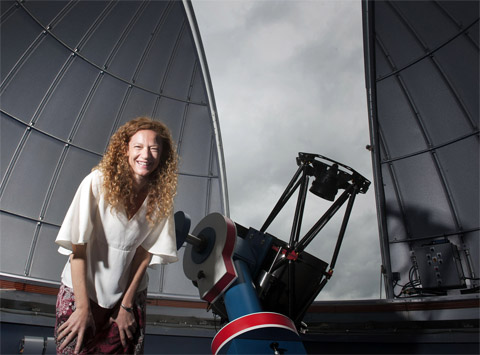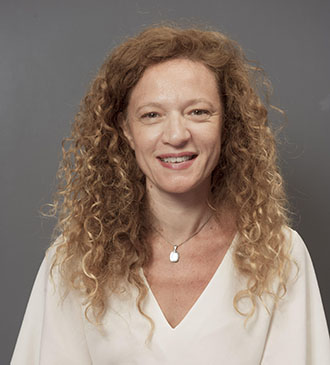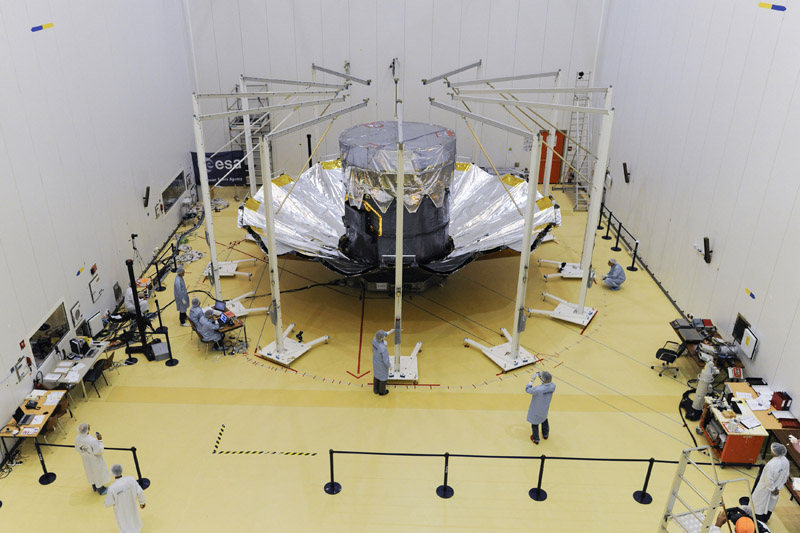
Treasure trove for astronomers
A sneak peek for Amina Helmi
Amina Helmi (1970) studies the structure and creation of the Milky Way. In her doctoral thesis, she argued that our galaxy gradually grew by absorbing other, smaller galaxies. Helmi is trying to find these galaxies and reconstruct the creation of the Milky Way.
She has received numerous grants and in 2017 she was inducted into the Royal Netherlands Academy of Arts and Sciences. Helmi has been involved in Gaia for approximately twenty years. She also helped to build the satellite and the first release of its data in 2016.
‘For astronomers, there are two eras: before Gaia and after Gaia’, says Amina Helmi. The new era has been ushered in by an unprecedented explosion of data unlike anything astronomers have ever seen – all thanks to thanks to the Gaia satellite.
Gaia was released into space in 2013 by the European Space agency and circles the Sun at 150 million kilometres from Earth. From there, the satellite is observing over a billion stars – about one percent of all the stars in the Milky Way. The data Gaia collects will be used to make a map of the universe.
Once before, in September 2016, ESA organised a data release that included the position and brightness of 1100 million (1.1 billion) stars ands distance and motions data for only the brightest two million. But today, the sky positions and brightnesses of nearly 1.7 billion stars are available, as well as distances, motions, and colour information for 1.3 billion. ‘The most difficult thing is to measure how stars and objects move’, Helmi says. ‘After a year of measuring – when the first data were released – that was not yet possible. But now it is. Many new discoveries will be made with this data set.’
A massive scramble
And because the Gaia mission was funded by over twenty European countries, along with the US, Israel and many others, these data will be released to everyone at once, and not first to the groups who financed it (as is the custom). All over the world, astronomers will dive into the data in a massive, simultaneous scramble to get their research going as fast as possible.
But UG astronomer Helmi can take it easy. She’s already explored the data a bit, as leader of a group responsible for validating them. The data set is so large, there is little to compare it to. To make sure that the data actually made sense, a few groups – Helmi’s among them – were asked to check it by asking ‘real’ scientific questions on a selected number of topics. ‘We were not allowed to do any modelling and answered the question as straightforwardly as possible.’
Now we can also measure the movement of the stars inside those galaxies
Helmi and her group looked at the motions of globular clusters: groups of stars moving around the Milky Way. ‘We also looked at small galaxies that orbit the Milky Way, that are very, very far out. Galaxies like the Magellanic Clouds. You can use them to measure the dark matter distribution in the Milky Way or find out how galaxies and satellites evolve.’
‘Absolutely fantastic’
The data make it possible to measure not only the movement of the galaxies, but also of the stars inside those galaxies. ‘That is absolutely fantastic’, Helmi says. ‘The stars are moving in a very coherent way that we have never seen before.’
An article about this initial research was published today, April 25, in Astronomy and Astrophysics. ‘It’s difficult to say what we found exactly’, Helmi says, ‘because already we found so much in every aspect of astronomy. It’s a treasure trove.’
One highlight is the fact that some satellite galaxies appear to be travelling through space in pairs, like space buddies, while half of the satelites are moving relatively coherently. ‘Not together, but in a flow.’
But not all of them do this. ‘That was a matter of contention among astronomers’, Helmi says. ‘But if we hadn’t found it, it would have been a big problem for our models.’
Galactic archeology
It was very clear that Helmi couldn’t do more than ask straightforward questions. ‘There was a deadline we had to meet’, she says. ‘The paper had to be out at the time of the data release. But it is true: once you see the measurements, your brain wants to do more. What does it all mean?’
Now we can see if we understand the force of gravity properly
The data set is so rich, she says, that even with a simple question, you’ll unearth something new. ‘It’s extremely hard to stay within the boundaries.’
Helmi already has big plans for using the data. ‘We try to understand dark matter and how it modifies the force of gravity’, she says. ‘When you measure motion, you really measure the forces that put an object into motion. So we can see if we understand the force of gravity properly.’ The data will also further her own specialized work: ‘Galactic archeology. Using stars to understand how the Milky Way was built. I’ve been waiting twenty years for this.’
Gaia Deployable Sunshield Assembly (DSA) undergoing deployment testing in Kuru in French Guiana.



